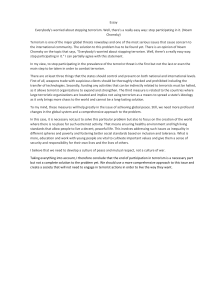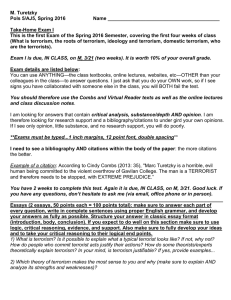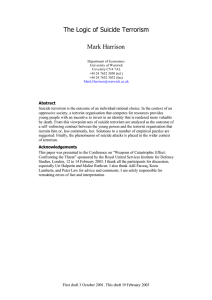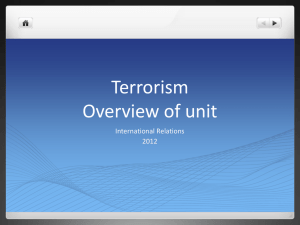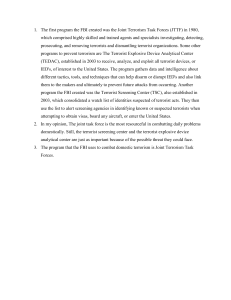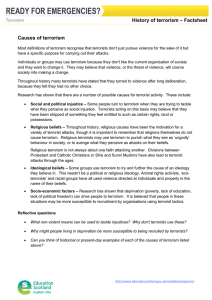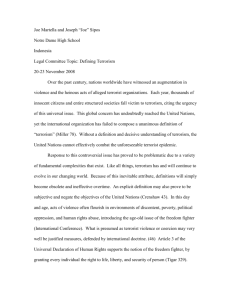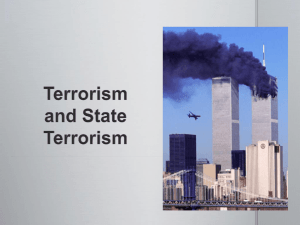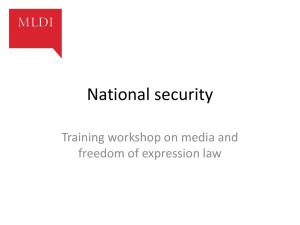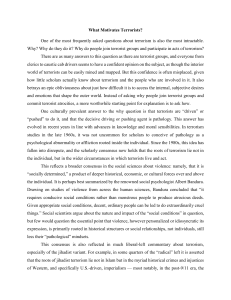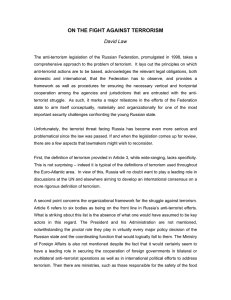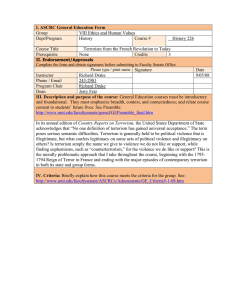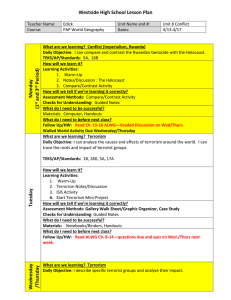Forms of “terrorist activity” in the past
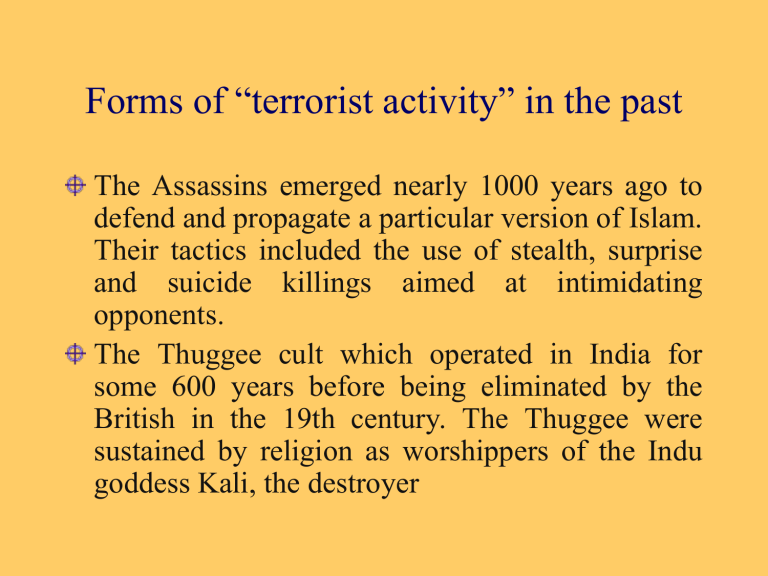
Forms of “terrorist activity” in the past
The Assassins emerged nearly 1000 years ago to defend and propagate a particular version of Islam.
Their tactics included the use of stealth, surprise and suicide killings aimed at intimidating opponents.
The Thuggee cult which operated in India for some 600 years before being eliminated by the
British in the 19th century. The Thuggee were sustained by religion as worshippers of the Indu goddess Kali, the destroyer
The use of inquisition by the Catholic
Church to suppress heresy and discourage challenges to the authority of the Church
Comparable tactics were used by the State, or those who controlled the power of the State, in order to suppress or intimidate opposition, whether legitimate or illegitimate
T he operation of the activities of the Committee of Public
Safety during a few early years of the French Revolution.
This was unusual in being widely described as “Terror” even at the time
The Twentieth Century experienced the Stalinist Regime in the Soviet Union and the Nazi Regime in Germany
Torture, disappearances, summary arrests and executions were widely used to terrorise groups and individuals into obedience to the dominant ideology (the so called “dirty war” waged by the Argentine military junta against leftwinged dissidents in the late Seventies is an example)
Defining terrorism is complicated
Terrorism
The conduct of wars guerrilla warfare
Strightforward criminal behaviour
Yasser Arafat in an address to the United Nations
General Assembly (1974)
………the difference between the revolutionary and the terrorist lies in the reason for which each fights.
For whoever stands by a just cause and fights for the freedom and liberation of his land from the invaders, the settlers and the colonists, cannot possibly be called terrorist…..
By this measure terrorists and terrorism can never be objectively defined as there will always be the subjective question of the “just cause”
Official definitions
The use of threat, for the purpose of advancing a political, religious or ideological cause of action which involves serious violence against any person or property
The Office of the Constitution of the European Union
……
terrorism ……. is the use, or threatened use, by a cohesive group of persons, of violence to effect political aims
Generally accepted elements
• It is political in that it intends to alter the political order or to influence political decisions or actions
(this does not mean that the intention must be to replace the present order with something specific: it may just be to overthrow the status quo).
• It is about power: sometimes the acquisition of power, but almost always the use of power or violence, or its threatened use, to attain political change
• Terrorism is planned and calculated to achieve the ends set out

![Powerpoint [PPTX 128.20KB]](http://s2.studylib.net/store/data/014990485_1-98baf1c3da0d68ac8a78e8dfe390d02e-300x300.png)
